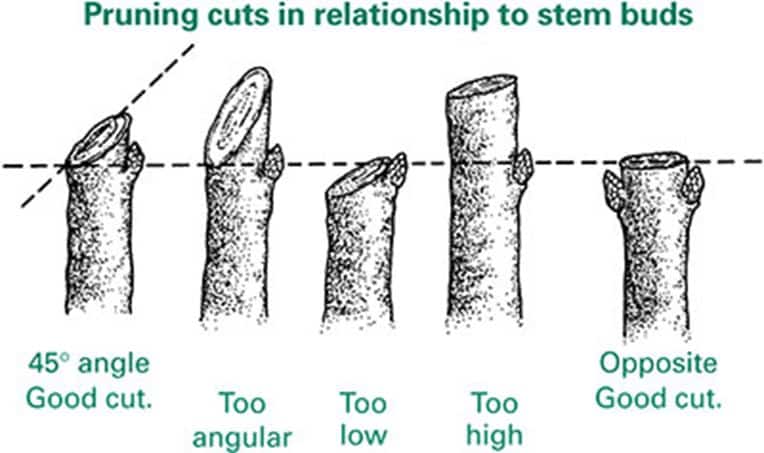If you are an exotic plant collector, Anthurium Vittarifolium is a must-have type of plant. Anthurium Vittarifolium will give a nice tropical jungle vibe to your room.
Anthurium Vittarifolium is a unique jungle plant with really long and narrow leaves with an incredibly dark green velvet glow that are capable of growing up to two meters long. Anthurium Vittarifolium leaves grow in a cascading position, so the best way to enjoy an Anthurium Vittarifolium will be by placing it in a hanging basket.
Anthurium Vittarifolium comes from South America, particularly the tropical rain forests of Colombia, Brazil, Peru, and Ecuador.
Taking into account its origins, we can already assume that this plant will require a lot of humidity and watering, just like many other Anthuriums. It will also prefer to have a lot of light, but never direct sunlight. So keep it away from any window.
Anthurium Vittarifolium produces flowers, but these are not useful for anything except for propagating from the seed. So if you’re not planning on propagating, it’s recommended to cut off the flower so the plant can focus purely on its growth.
If you’re planning on buying or planting an Anthurium Vittarifolium, here’s a complete care guide on how to maintain it healthy and make it grow strong. This guide provides details in watering, lighting, temperature, fertilizers, and much more.
Also, it includes a section on how to propagate it. Hope it helps, enjoy!
Featured images by JavaOrganicFarm from Etsy.

Summary:
- Light: Medium to bright indirect sunlight
- Water: Once every 3 days
- Soil: Well-drained and well-aerated
- Fertilizer: Once a month, only during the growing season
- Size: Up to 7.9 feet tall (2.5 m)
- Size: Grows up to 4" (10 cm) wide
- Temperature: Between 60° and 75°F (16-24°C)
- Humidity: Best above 60%
- Cold hardy: Not cold hardy
- Propagation: By stem cuttings, division, and seeds
- Toxicity: Toxic to humans and animals
Contents
- General Care for Anthurium Vittarifolium
- Water
- Light
- Soil
- Potting
- Fertilizer
- Humidity
- Temperature
- Pruning
- Diseases
- Pests
- How to Propagate Anthurium Vittarifolium
- Division
- Cutting
- Seeds
- Related questions:
- Why are the leaves of my Anthurium Vittarifolium turning yellow?
- Why are the leaves of my Anthurium Vittarifolium brown?
- Is the Anthurium Vittarifolium care toxic?
- Why does my Anthurium Vittarifolium have black spots?
General Care for Anthurium Vittarifolium
Water
Anthurium Vittarifolium must be watered once every two or three days during its growing period you can leave the soil dry a bit more during winter. This is a very thirsty plant that loves moisture. But be careful, overwatering could cause root rot and yellow leaves.
Make sure to let the soil dry in between waterings. Also, don’t forget to mist the leaves when watering to maintain Anthurium Vittarifolium’s humidity.
Anthurium Vittarifolium must not receive heavy soakings of water. Instead, pour the water lightly but in a consistent manner. If you happen to find the leaves of your Anthurium Vittarifolium turning yellow, just leave it alone a couple of days without water and it will most likely go back to normal by itself.
Light
Anthurium Vittarifolium requires medium to bright indirect light (1500 to 2500 FC). Anthurium Vittarifolium is the type of plant that loves shade so try to place it in a spot where it’s getting at least between 70% and 80% of shade.
Be careful with leaving Anthurium Vittarifolium in a low level of light for long periods, this could slow down the plant’s growth. To check this, pay attention to the flower production, if it stopped, then the plant most likely will be needing more light.
If the plant is placed in an indoor spot, provide it with bright diffused light and make sure to keep it far from any windows in the house.
Soil
Anthurium Vittarifolium will grow perfectly in a well-aerated medium soil mix with a pH between 6.6 and 7.5 (neutral). The mix needs to have good drainage and water retention because Anthurium Vittarifolium is a plant that needs to be watered frequently.
An ideal well-aerated medium mix will hold the roots and stems strongly so that the plant doesn’t overbalance as it grows. This is very important due to the cascade way the leaves of the Anthurium Vittarifolium grow. Wood chips and macadamia nut shells will be of good use for anchoring the roots.
Bark and moss are both good choices to plant Anthurium Vittarifolium because they provide the right amount of nutrients, moisture, and aeration this plant needs.
Potting
A pot for Anthurium Vittarifolium must be a low plastic pot with good drainage capacity since it is a plant that you will be watering frequently due to the moisture it requires. Moisturizing Anthurium Vittarifolium without good drainage can cause root rot. The most commonly used pots for these are five, six, and 8 inches.
As for repotting, Anthurium Vittarifolium will require to repot in two situations: either the plant has doubled its size, or after twelve months. When the plant hits one of these moments, then it’s time to move it.
Fertilizer
Anthurium Vittarifolium requires a slow time-release fertilizer once a month. The reason behind this is that Anthurium Vittarifolium roots are very delicate, this means quick time-release fertilizers and organic powder fertilizers can burn them.
Although the soil mix will feed the plant the majority of nutrients it needs, consistency in fertilizing Anthurium Vittarifolium will be the key to growing a healthy and strong plant
After repotting, a good fertilizing option for Anthurium Vittarifolium will be the Osmocote fertilizer since this will provide the plant with the nutrients that the soil can no longer feed it. Liquid fertilizers can also have a good effect on Anthurium Vittarifolium when used as foliar applications (pour in low concentration).
Humidity
The humidity around Anthurium Vittarifolium must be between 70% and 80%.
Most houses have humidity running between 40% and 50%, but during cold winters and dry summers the humidity can drop down a lot depending on the area. If this seems to happen, misting is a great method to get back the ideal humidity. Another way to increase humidity is by placing it around other plants.
Although Anthurium Vittarifolium is a jungle plant that requires a lot of humidity, you shouldn’t overwhelm the plant with it or it will most likely have fungus issues. But this is very rare since
Anthurium Vittarifolium is one of the most tolerant when it comes to humidity.
Temperature
The ideal temperature for an Anthurium Vittarifolium to grow is between 16-25°C (60.8-77°F).
Extremely low temperatures will surely kill the plant, it’s one of Anthurium Vittarifolium’s biggest weaknesses. On the other hand, very high temperatures can dry the plant’s foliage and eventually make your Anthurium Vittarifolium fade.
If this happens water the plant and mist the leaves to maintain the humidity and hydrate the plant.
These tropical plants are very sensitive to drastic temperature changes, so try to keep them in a stable spot in which the temperature stays mostly the same at all times. Make sure the plant inst near heaters, windows, doors, etc.
Pruning
Pruning with Anthurium Vittarifolium should be done from the top down. The first thing you must remove if you want your Anthurium Vittarifolium to continue growing is to cut the flowers. In case you want to propagate it by seed, first, take the seed out and then remove the flower, this will let the plant focus its energy on growing.
Just like most plants, when pruning Anthurium Vittarifolium look for dead, discolored, and wilted leaves and cut them gently to not harm the other healthy leaves.
You can also remove some healthy leaves if the plant is too crowded with them, but this is optional and just for appearance purposes.
Diseases
The worst disease an Anthurium Vittarifolium can catch is called “Anthurium blight” and it is caused by fungus when the plant is surrounded by too much humidity.
The disease starts as small spots surrounded by yellow and light green areas, but eventually, these spots start to expand and dry out the entire leaf.
Some say this disease has no cure, but others believe it can be treated with different oils and fungicides, but Anthurium blight is known for being pretty deadly. The best option is to try to prevent it with daily maintenance, pay attention to overwatering, keeping fields clean, and not placing the plant in humid cabinets.
Pests
When it comes to pests, the most common enemies of the Anthurium Vittarifolium are mites, snails, worms, slugs, thrips, and whiteflies. These insects will mainly attack the flowers and the leaves and disfigure them.
The best way to avoid them is by cleaning the leaves daily to spot them early. If the leaves of your Anthurium Vittarifolium are looking kind of funny, it is most likely to catch pests.
If you happen to identify any of these pests early on, the best way to treat them is with insecticidal or regular soap and water.
Another way to get rid of them is by cutting off the infected leaves and putting them in a sealed bag. That way the insects will stay trapped and won’t be able to move to another plant or leaf.
How to Propagate Anthurium Vittarifolium
For Anthurium Vittarifolium was going to go through two different methods: Division and cutting.
Division
This is the most common and easy method to apply. The division is simply removing the mother Anthurium Vittarifolium from its pot, cleaning the soil from the roots, and dividing the roots with a sharp knife without tearing. Finally, just plant the other roots in a new pot and leave the mother plant in its original pot.
Look for roots that are easy to separate, carry this process with a steady hand because one mistake can result in killing the whole plant. Make sure to use the same fertilizers and soil mixes of the original for the clone plant.
Cutting
Cuttings is a process that requires a little more preciseness but can still be done. This method will consist of taking a sharp knife and slicing the leggy growth of the Anthurium Vittarifolium, which is a result of healthy development. After successfully achieving this, plant in a new pot.
The best thing about this method is that besides getting a replica of your original Anthurium Vittarifolium, the mother plant will reward you with multiple shoots right where the cutting occurred.
Seeds
You can also propagate your Anthurium Vittarifolium with seeds. Seed propagation is the method with the least chance of getting the same as the original. This is simply done by taking a seed from the small orange fruits the plant produces once the flower matures and planting it in a new pot.
Related questions:
Why are the leaves of my Anthurium Vittarifolium turning yellow?
If you’re Anthurium Vittarifolium is turning yellow this could mean two things. Either you’re overwatering it or feeding it too many nutrients. You’ll be the judge of what you’re giving your plant in excess.
So if you find yourself facing a yellow Anthurium Vittarifolium try not feeding it for some time, just water. But if it’s the other way around, don’t water it for a week and let the soil dry off to see if that’s it. Make sure the pot you’re using has good drainage.
Why are the leaves of my Anthurium Vittarifolium brown?
Anthurium Vittarifolium with brown leaves is caused for too much sunlight, nutrient or water deficiency, and diseases.
Make sure your plant is in a clean environment, with indirect sunlight with water every 3 days and fertilizers once a month.
If your Anthurium Vittarifolium is brown with dry leaves, it has most likely caught Anthurium blight disease, which unfortunately has no cure. But you can prevent it by caring for the plant every day.
Is the Anthurium Vittarifolium care toxic?
Yes. Anthurium Vittarifolium is a toxic plant, Every part of it is toxic, from the leaves to the flowers. Do not ingest it and watch out for infants and pets near this plant. Ingesting this plant will cause pain in the mouth, tongue, and throat.
Why does my Anthurium Vittarifolium have black spots?
If your Anthurium Vittarifolium has black spots then it has Anthurium blight disease. This is caused by a bacteria that attacks the leaves beginning with brown and dark green spots which later evolve to be black dry spots that kill the leaves.
This bacteria appears when the humidity of the plant is too high. So make pay attention to the level of humidity surrounding your Anthurium Vittarifolium once in a while.
Black spots can also be caused by too much sunlight and water deficiency.



